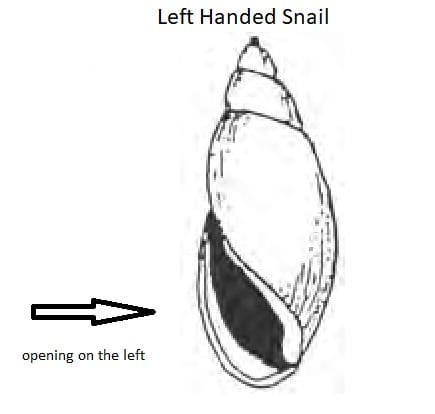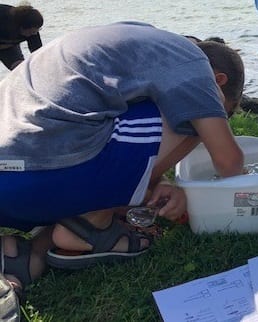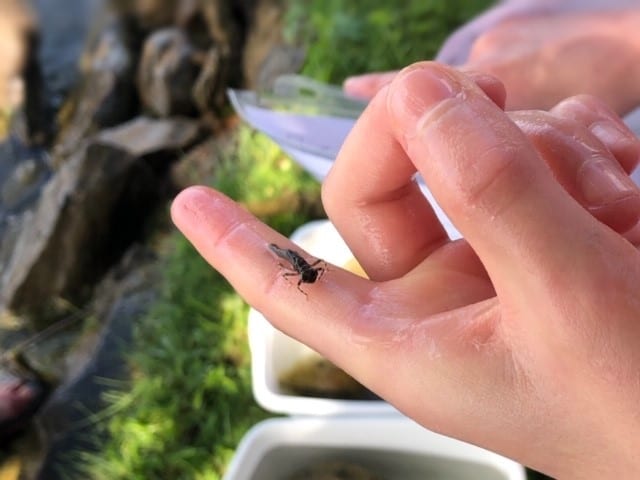Part Two of our Learn the Lake series included a session on benthic macroinvertebrates. The name says it all. Benthic meaning bottom dwelling, macro meaning visible to the naked eye and invertebrate meaning no backbone. They are typically found attached to rocks, vegetation, logs and sticks or burrowed into the bottom sand and sediments.

After teaching the “scientific” method for stirring up the sediment, which is scuff up the bottom with your foot, we armed the group with nets and sent them into the lake. At first it seemed like the only thing we could find were zebra mussels and snails, but the experienced eye of Dr. Rebecca Sam showed us how wrong we were. The kids recorded their findings which included caddisfly, mayfly, damselfly and dragonfly nymphs, water penny, snails, leeches and beetles.
Can you tell the difference between a damselfly and a dragonfly?
These “macros” can tell us a lot about the quality of the water. Generally, waterbodies with good water quality support a wide variety and high number of macroinvertebrate taxa, including many that are intolerant of pollution. Caddisfly, mayfly nymphs and water penny are very intolerant. Left-handed snails, black fly larvae, leeches and rat-tailed Maggots, as you can guess by their names, tolerate pollution.
Left-handed snails you ask?


Right-handed snails breathe through gills and are intolerant of pollution. The left-handed snails are lung breathing and tolerant of pollution.
If this all sounds fascinating to you and you are jealous of these learning opportunities for the kids, check out Hoosier River Watch. If there is enough interest, LMEC can host a training in Culver once we are back to in-person training events.

We were pleased with the turnout and anticipate making this an annual event.

Hi, I’m Debbie Palmer. I received a BS in Horticulture from Purdue University. Here at LMEF, I am responsible for outreach presentations, monitoring the lake and it’s wetlands, project manager for restoration and research projects, and act as a community resource for all things related to the well-being of Lake Maxinkuckee and its surrounding watershed. I completed Indiana Watershed Leadership Academy, volunteer with the Indiana Clean Lakes Program, Hoosier River Watch and Marshall County Lakes and Waters and serve as a Board Member for Indiana Lakes Management Society.


Recent Comments